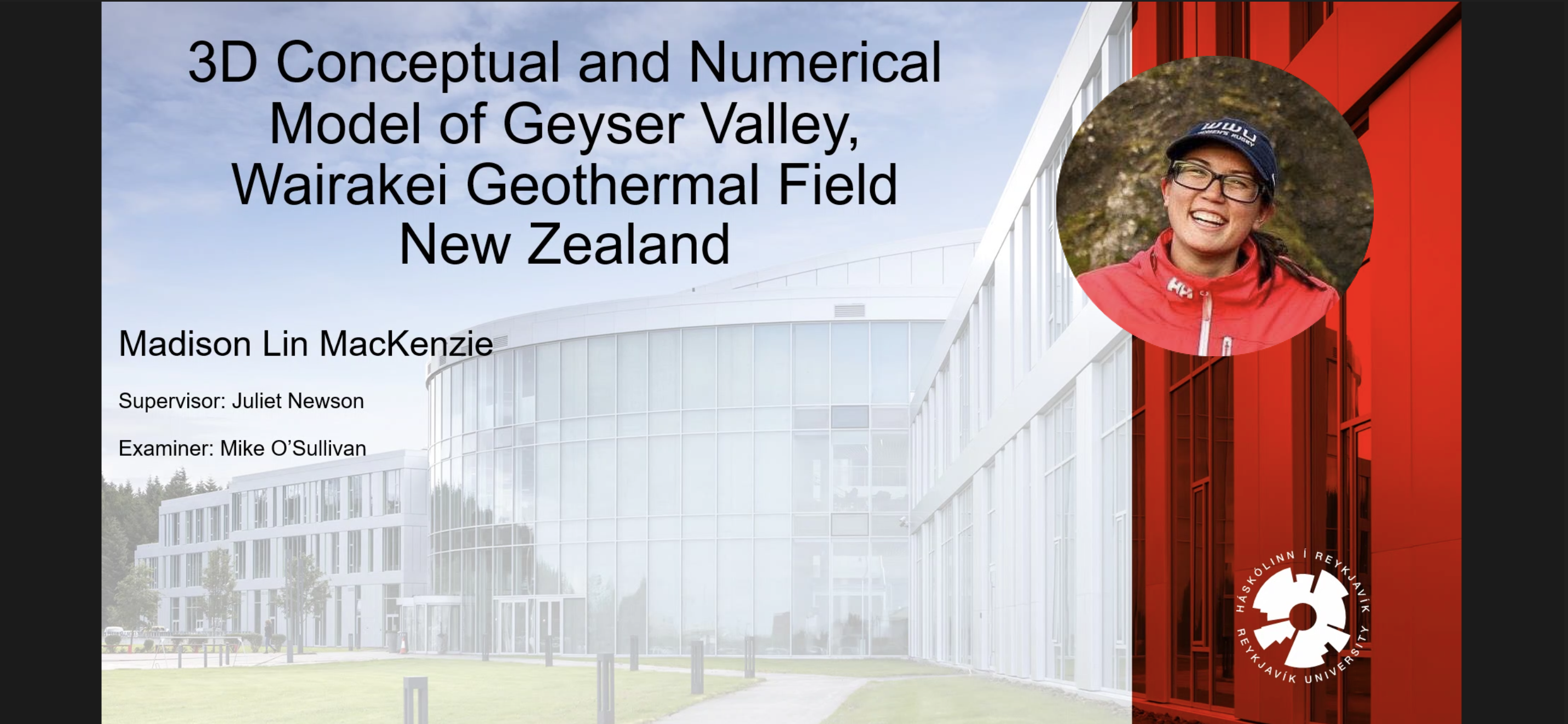MSc Thesis: 3D Conceptual and Numerical Model of Geyser Valley, Wairakei Geothermal Field New Zealand
REYKJAVIK, May 31 - MSc in Sustainable Energy Engineering candidate, Madison Lin Mackenzie, successfully defended her master's thesis where she explores a 3D conceptual and numerical model of Geyser Valley, Wairakei Geothermal Field New Zealand. Madison's work was supervised by Dr. Juliet Ann Newson from Reykjavík University and examination was conducted by Professor Michael O´Sullivan from the University of Auckland.

Madison begins by providing context around Geyser Valley, currently known as Wairakei Valley, which is a small valley located within the geothermal field of the Wairakei Powerplant in Wairakei, New Zealand. Geyser Valley was once a beautiful landscape filled with geothermal wonders such as geysers, mud pots, sinter terraces, and hot springs prior to geothermal production of the field in 1951. She goes on to explain that post-production the fluid flow into the valley ceased and turned into an area of steaming ground, and it was then hypothesized that the fluid flow into the valley is heavily influenced by production and the pressure within the geothermal reservoir. This is supported by geochemical analysis regarding the Cl− concentrations of the features within the valley. She states that the fluid that once flowed to the surface in Geyser Valley is hypothesized to have traveled from the geothermal reservoir through a fault, subjected to boiling causing a small steam zone to form just below the surface, and then infiltrated by a secondary shallow source of cool Cl− rich waters before flowing out at the surface.
To study this phenomenon she creates and tests two models, a conceptual model and a numerical model. Madison creates the first 3D geologic model using Leapfrog Geothermal, a Seequent modeling software. She then goes on to create a conceptual model of processes in the subsurface. The second model she creates is a numerical model utilizing the mass fractions of the two water sources and relative permeabilities between the liquid and vapor in the subsurface.
Madison concludes with the results of the models, which show the geology of Geyser Valley, a possible permeability structure, and how the geothermal and diluting fluids are mixing, supported by comparing the calculated Cl− concentrations and the real-life Cl− concentrations from Geyser Valley. Her thesis shows that the hypothesis of boiling in the reservoir upflow into Geyser Valley can be modeled, and the degree of detail in the geologic and conceptual model are able to provide a basis for more detailed numerical modeling.
Congratulations on an excellent thesis defense, Madison!
